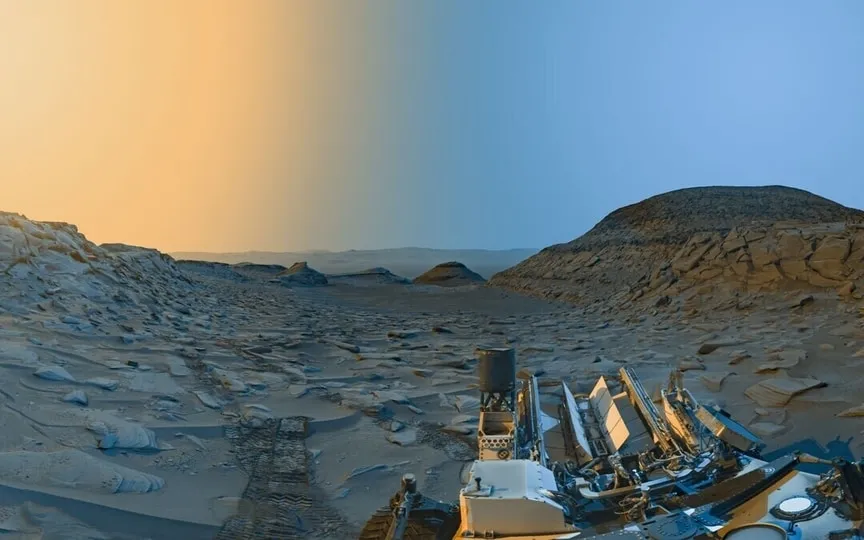Stunning Image from Mars Captured by NASA’s Curiosity Rover
The Red Planet’s diverse times of day have been showcased in a stunning postcard unveiled by NASA’s Curiosity Rover on Mars. After a significant software update that enhanced the rover’s driving speed and decreased wheel wear, Curiosity took captivating pictures of the “Marker Band Valley” before continuing its journey.
According to NASA, the Panorama images were taken on April 8, 2023 with black and white navigation cameras. To improve the visual appeal of the postcard, colors were added later, where blue represents morning pictures and yellow pictures taken in the afternoon.
The postcard not only captures the picturesque landscape, but also features prominent Martian landmarks. In particular, it includes the “Marker Band Valley”, where the rover made unexpected discoveries that point to an ancient lake. Two hills named “Bolivar” and “Deepdale” are also depicted there.
Doug Ellison, a Curiosity engineer at NASA’s Jet Propulsion Laboratory in Southern California, explained the importance of taking images at different times of the day. He drew an analogy with national parks and emphasized how lighting conditions change the landscape. “Shooting at two times produces dark shadows because the lighting comes in from left and right, like on stage – but instead of stage lights, we’re relying on the sun,” Ellison explained.
NASA noted that the rover imaged Mars during the winter season, when dust levels in the Martian atmosphere are at their lowest. As a result, shadows appear sharper and deeper, enhancing the visual impact. “Shadows on Mars become sharper and deeper when there is little dust, and softer when there is a lot of dust,” Ellison explained.
In a separate development, a new image of Mars challenges the commonly known perception of its redness. The image, released to mark the 20th anniversary of the European Space Agency’s Mars Express mission, was created using data from the spacecraft’s High-Resolution Stereo Camera (HRSC). This detailed mosaic of Mars highlights its color and composition, revealing a surprising departure from its expected red hue.
The European Space Agency ESA recognized the uniqueness of Mars in the night sky and distinguishes it from other celestial bodies. The changing atmosphere of Mars has historically prevented accurate color representation from space. ESA explained that dust scattering and light reflection cause color variations between images, often resulting in patchy compositions when combined.
These fascinating images and new insights into the coloration of Mars deepen our understanding of the Red Planet’s fascinating landscapes and atmospheric conditions.




